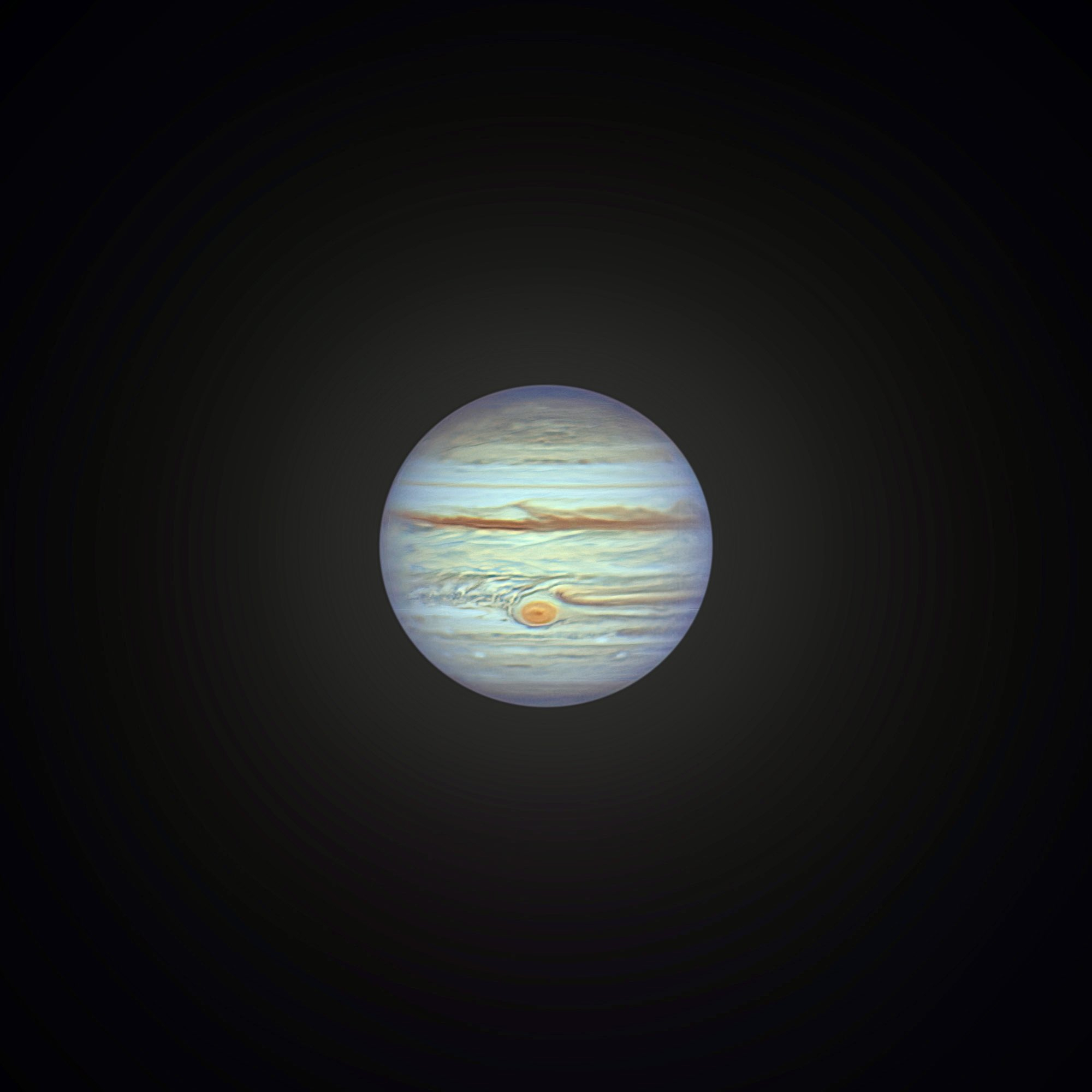This jaw-dropping Jupiter photo is a photographer's sharpest ever and made of 600,000 images
"Viewing Jupiter never gets old. It is a magnificent planet," astrophotographer Andrew McCarthy said of his sharpest photo yet.
One photo of Jupiter may be worth a thousand words, but what about more than half a million?
Veteran astrophotographer Andrew McCarthy of Arizona unveiled this spectacular photo of Jupiter this month on Sept. 17 after capturing his best view yet of the giant planet this month. But what you're seeing isn't just one photo, it's a combination of hundreds of thousands of images.
"After spending all night shooting around 600,000 photos of it, I'm thrilled to show you my sharpest Jupiter shot so far," McCarthy wrote on Twitter while sharing the image on Sept. 17. "This was captured using an 11" telescope and a camera I usually use for deep sky work." You can see more of McCarthy's photos on his Instagram page @cosmic_background as well as his astrophotography website.
Related: See Jupiter at its closest point to Earth since 1963
A post shared by Andrew McCarthy (@cosmic_background)
A photo posted by on

Looking for a telescope to see Jupiter? We recommend the Celestron Astro Fi 102as the top pick in our best beginner's telescope guide.
McCarthy uses software to stack multiple images taken during a night sky photo session and the results are stunning. He used a similar technique to take a "ridiculously detailed" image of the moon that took months. Jupiter, he said, is always a great target for his camera eye.
"Viewing Jupiter never gets old. It is a magnificent planet," McCarthy told Space.com in a statement. "And while the number of photos seems like a lot, I was capturing them at about 80 per second, so it went by relatively fast." In all, it took about two hours to snap the photos, he added.
"Conditions were very good that night so I saw the planet in much more detail than usual, which was very exciting," McCarthy added.
Breaking space news, the latest updates on rocket launches, skywatching events and more!
Viewing Jupiter never gets old. It is a magnificent planet.
— Andrew McCarthy
Jupiter is will be at opposition for 2022 on Sept. 26, making this the best time to observe the giant planet this year. It can easily be seen with the unaided eye as a bright light in the eastern night sky.
This year, the planet's opposition will mark Jupiter's closest approach to Earth in 59 years. It will be 367 million miles (591 million kilometers) away, the closest its been to Earth since 1963.
If you're hoping to get a better look at Jupiter in the future and are looking for gear to help you, check out our guides for the best binoculars and the best telescopes to spot the giant planet and other celestial sights.
For capturing the best Jupiter pictures, don't miss our recommendations for the best cameras for astrophotography and best lenses for astrophotography. Here are our tips on astrophotography for beginners to help you get started.
Email Tariq Malik at tmalik@space.com or follow him @tariqjmalik. Follow us @Spacedotcom, Facebook and Instagram.

Tariq is the award-winning Editor-in-Chief of Space.com and joined the team in 2001. He covers human spaceflight, as well as skywatching and entertainment. He became Space.com's Editor-in-Chief in 2019. Before joining Space.com, Tariq was a staff reporter for The Los Angeles Times covering education and city beats in La Habra, Fullerton and Huntington Beach. He's a recipient of the 2022 Harry Kolcum Award for excellence in space reporting and the 2025 Space Pioneer Award from the National Space Society. He is an Eagle Scout and Space Camp alum with journalism degrees from the USC and NYU. You can find Tariq at Space.com and as the co-host to the This Week In Space podcast on the TWiT network. To see his latest project, you can follow Tariq on Twitter @tariqjmalik.


